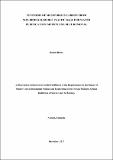| dc.contributor.author | Henry, Kazula | |
| dc.date.accessioned | 2019-05-31T06:22:20Z | |
| dc.date.available | 2019-05-31T06:22:20Z | |
| dc.date.issued | 2017-12 | |
| dc.identifier.uri | https://doi.org/10.58694/20.500.12479/270 | |
| dc.description | A Dissertation Submitted in Partial Fulfillment of the Requirement for the Degree of
Master’s in Environmental Science and Engineering of the Nelson Mandela African
Institution of Science and Technology | en_US |
| dc.description.abstract | In the present work, the mesoporous carbon materials with pore diameter of 14.2 nm and
specific surface areas of 15.18 (m2g-1) identified by Brunauer, Emmett, and Teller (BET)
were synthesized from non-biodegradable plastic bags (LDPE) wastes using hard template
technique with alpha-manganese (IV) oxide by optimizing plastic scraps to α-MnO2 mass
ratio i.e. 1:1, 1:2, and 1:3 and temperature between 400°C and 600°C for each sample.
Powder X-ray diffraction (XRD) identified the morphological structural order and textural
properties of mesoporous carbon to be amorphous. α-MnO2 as template was prepared
following literature procedure by redox titration under reflux heating for 24 h.
The mesoporous carbon materials were tested for efficiency on Methylene Blue dye removal
whereby samples obtained from plastic scraps to α-MnO2 mass ratios of 1:1, 1:2 and 1:3 at a
temperature of 400°C and 600°C were used. Mesoporous carbon from plastic scraps to α-
MnO2 mass ratio 1:1 at 600 °C suited for further adsorption experiments in batch technique
due to its lower absorbance of 0.143 as compared to the rest samples of plastic scraps to α-
MnO2 mass ratio.
The Langmuir and Freundlich models were used to analyze the equilibrium data that
described how mesoporous carbon interacts with Methylene Blue in aqueous solution in
adsorption process. Results revealed that the isotherm data fitted Langmuir model with
maximum dye adsorption of 1.644 mg/g at 80°C than Freundlich model whereby, the
mesoporous carbon material adsorbed over 80% of the Methylene Blue dye in less than 35
min. The results provided evidence that mesoporous carbon is effective for the removal of
dyes from aqueous dye solutions and industrial effluents. Also, the work provides another
technique to plastic bags recycling into useful material-mesoporous carbon for industrial dye
removal by adsorption. | en_US |
| dc.language.iso | en_US | en_US |
| dc.publisher | NM-AIST | en_US |
| dc.subject | Research Subject Categories::FORESTRY, AGRICULTURAL SCIENCES and LANDSCAPE PLANNING | en_US |
| dc.title | Synthesis of mesoporous carbon from non-biodegradable plastic bags for water purification: methylene blue removal | en_US |
| dc.type | Thesis | en_US |

